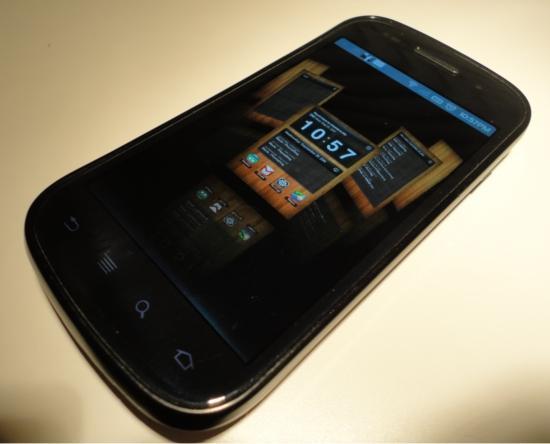
One of the most glorified benefits of choosing Android over other mobile operating systems is its unmatched selection of software and hardware, and the seemingly endless customization options. On the shelf, Android comes in many different forms. Samsung, HTC, Motorola, LG and many more have all twisted and altered Android from its vanilla state and applied their own custom interfaces.
For better or for worse, OEMs believe that these custom skins improve their end user experience by polishing Android and offering a long list of extra services. More often than not, these custom skins bring over the top animations and background processes that can greatly alter performance, bringing intermittent lag and other issues. Fortunately, if you do not like said interfaces, you have the option of "rooting" your device and either applying custom themes, flashing different ROMs and tweaking the software until it no longer looks or feels like Android.
The problem is that rooting isn't for everyone. It isn't always so cut and dry, and it voids the manufacturer warranty. Nine times out of 10, rooting requires some basic command prompt knowledge and intermediate computer skills. Even when users have the option of a "one-click root" – a simplified, user-friendly root method – the process comes with a disclaimer along the lines of, "I am not responsible for any damages to your phone that may occur in the process. Proceed at your own risk." No matter how low the risk of a "broken device" may be, it simply is not worth it to some people to test their luck or to void their warranty.
All is not lost, however, for those who are not daring enough to test the rooting waters – trust me, there is nothing wrong with that. There are other methods of achieving a similar level of customization, on the aesthetics part at least: launcher or home replacement applications. The only notable downside to these home replacement apps is that any buggy software or lag that may be occurring will not be fixed by simply installing a third-party launcher. And the entire custom interface like Sense or TouchWiz will not be replaced; certain aspects (like the Sense- or TouchWiz-specific Messaging app) will persist.
Some of the more well-known home replacement apps are Launcher Pro, ADWLauncher EX, GO Launcher, SPB Shell 3D and Regina 3D. Most of these come in both free and paid versions and vary in features, customization and speed. After installing one of these home replacement apps, a pop-up will appear when you press the home button, asking which launcher you would like to use. If you set the new launcher to the default, the pop-up will not appear anymore and you will never be asked again.
(Note: uninstalling the launcher will set the default back to the original launcher. You can also reset the defaults for the launcher by finding the particular launcher in use in Application Management found in Settings.)
It would be nearly impossible to list all of the added features found in all of the launcher replacement apps in a single post, and you would probably lose interest halfway through anyway. For the most part, you will find customization options that will allow you to change the grid size of the home screen (default is a four by four grid), download and install launcher-specific themes from Android Market, change the animations that occur when switching home screens, customize the look of the app drawer, and much more.
It's also impossible to recommend one launcher replacement over another. There are so many to choose from, and there is no real consensus on the best launcher. Personally, I've tried ADWLauncher EX, Launcher Pro, GO Launcher and Regina 3D. The only reason I haven't tried SPB Shell 3D is because it's a whopping $15, and the 15 minute return window is hardly enough to explore everything SPB has to offer.
I have had a love/hate relationship with each one I have tried, but the one I constantly find myself going back to is ADW. A lite version of this launcher is used by default in CyanogenMod 7, and I've just grown attached to it for no particular reason over the months.
If you're tired of Sense UI, MAP, TouchWiz or even stock Android and do not care to root your device, give one of these launcher replacement apps a try. Since I can't definitively say you should use one over another, I can recommend where to start: Launcher Pro, GO Launcher or ADWLauncher. These are easily the more popular of the bunch and have free, limited versions. There is nothing to lose. If you try one and do not like it, simply uninstall and move on to the another.
Do any of you Android nuts out there use launcher replacements? If so, which one and why?